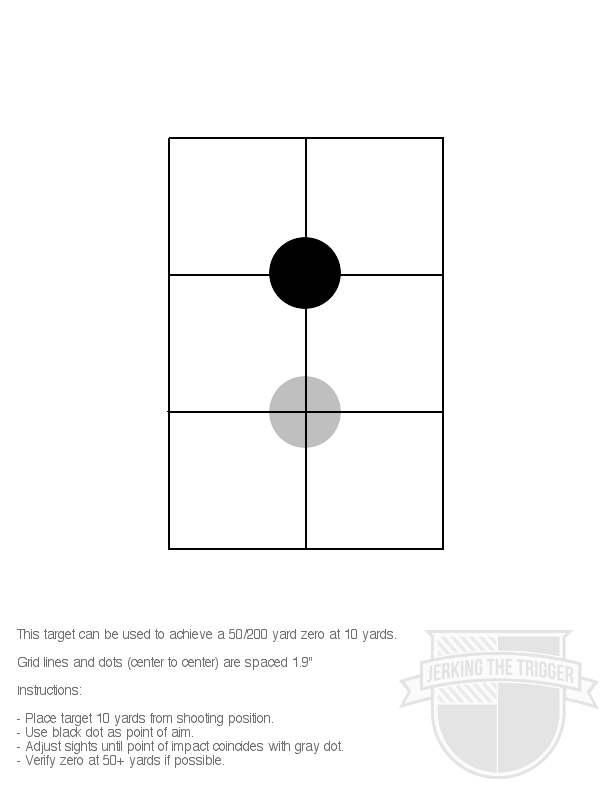Look at it this way -
At 10 yards or less, what's the likelihood that you'll even get to use your sights, before the fight is literally "on top of you?"
Understand that the handgun is in-reality a very poor -
objective- fight-stopper. The terminal ballistics just isn't there in the way that it is for a long-gun. Thus, if the aggressor is charging at you full-tilt with a contact weapon, in the case of the canonical "Tueller Drill," understand that in the real-world, that aggressor may well mortally wound you even as he/she dies of the gunshot wound(s) you inflicted on them, simply because they're just heading so fast in your direction that they fall on/at you even with their dying breath (and even if the contact weapon doesn't come into play, if you're bowled-over and hit your head on the pavement or an object, that's still far from ideal).
Now, with this in-mind, play the following game
without even using a firearm: have a training partner aggressively advance on you form 7 to 10 yards away. Make your partner's goal consensual but competitive - he/she should come at you in a straight line so that you can easily drop a bead on them with your "hands in the shape of a gun" or with a training aid (below). Starting at just a purposeful walk, as them to accelerate up to a full charge in subsequent trials: the idea is for them to try to reach you and tag you somewhere on the torso before you can raise your hands in front of you and yell "stop," as though you were drawing down and firing on them.
A water-gun will make this even more enjoyable on a hot summer day. Got an airsoft pistol and some eye protection? All the better. This is even possible live-fire, with the defender (the person with the firearm) shooting at, say, a full-size torso from the 7 to 10 yard line, while the aggressor attempts to cover the distance specified in the drill, albeit on a perpendicular axis safely behind the shooter. A bystander or just the aggressor can assess where the charge ended, when the shot breaks.
So most folks will then say that it's an easy fix, they'll just move....
And many times, these same folks have never tried to draw or shoot while moving aggressively/dynamically. And even fewer will have practiced doing so versus a moving target (one whose profile/size is effectively decreasing and who is actually displacing more arc as they draw nearer, due to both how the actual human body and its vital anatomy will present as it blades to the side, as well as the law of inverse proportions [imagine that you wanted to toss a frisbee to your friend who is running full-tilt perpendicular to you, at a distance of 5 ft. versus a distance of 50 ft.).
Zeroing at 5 to 7 yards may make for easy work in the belt-buckle-to-belt-buckle world of a flat range or in an otherwise static context.... In the real-world, it's really going to make for more trouble than it will be of assistance, at any distance.
For those who need to zero in-particular their ARs at closer distances due to range limitations, a properly calibrated 10-yard target can help you get reasonably close to a true 50-yard zero:
This recent video (below) from Frank Proctor at Way of the Gun and Trigger Time TV is excellent. In it, Proctor talks about why he uses the 50 yard zero, how to achieve a 50 yard zero at 10 yards, …
jerkingthetrigger.com
and
You may remember Frank Proctor’s method for achieving a 50/200 yard zero at 10 yards with your AR-15 that was mentioned here a few months ago. I have been putting it to good use. It is a very…
jerkingthetrigger.com
^ ....but understand that at 10 yards, you really, really need to put forward a 110% effort and try to make those bullet holes from your zeroing groups are all touching each other. Because of the truncated distance, you are effectively artificially minimizing the deleterious effects seen of imperfect marksmanship practices that would have otherwise showed up as you actually pushed yardage during your 50 or 100 yard zero.
To zero a service/defensive pistol, the standard is to print groups off a bag or rest at the 25 yard line. Freestyle unsupported, the shooter and gun combo should be able to print a 5 inch group at that same distance (reason? Larry Vickers explains it well --->
https://www.vickerstactical.com/accuracy.html ; and in order to achieve this level of performance, a shooter will need to be able to produce the following level of accuracy/precision as Tim Herron demonstrated at the 7 yard line:
https://www.unitedgungroup.com/news/2016/11/21/tim-herron/ - video format:
)
With modern service/defensive calibers, anything from a sub-compact to full-size handgun will only require "point-of-aim/point-of-impact" holds to effect appropriately accurate-for-circumstances shots (i.e. "surgical" at closer distances, to "center-mass" at upwards of even 100 yards).
With long-guns with height-over-bore considerations for sights, such as the AR, the shooter must be well-practiced in holding for mechanical offset at shorter distances.
While most lethal-force scenarios where us average-Joe/Jane law-abiding citizens may find ourselves needing to go to our gun are cited as firing the mold of "3-ft., 3 rounds, 3 seconds," we should recognize the fact that these are the parameters where the confrontation *_ends_*. At such closer distances and with little time to react, I humbly submit that it is less about using the gun -or any tool- to solve the problem: that it is simply about solving the problem.
That, and take a look at your real world....
Is the Nike Defense necessarily always possible when the setting is a restaurant, gas-station market or a corner drugstore, a large grocery store or "big-box shop" (for a real eye-opener, pace out the distances there, and search up some incidences in the last decade or so of civilian-involved defensive shootings in those surroundings), or even a movie theater?
As Clint Smith says, it's true that mediocre shooting often carries the fight. I'll take luck over skill, any day. But he also insists that we train towards magnificence, so that when we fail towards mediocrity, we might still walk away victorious.
Sorry to derail the thread!



